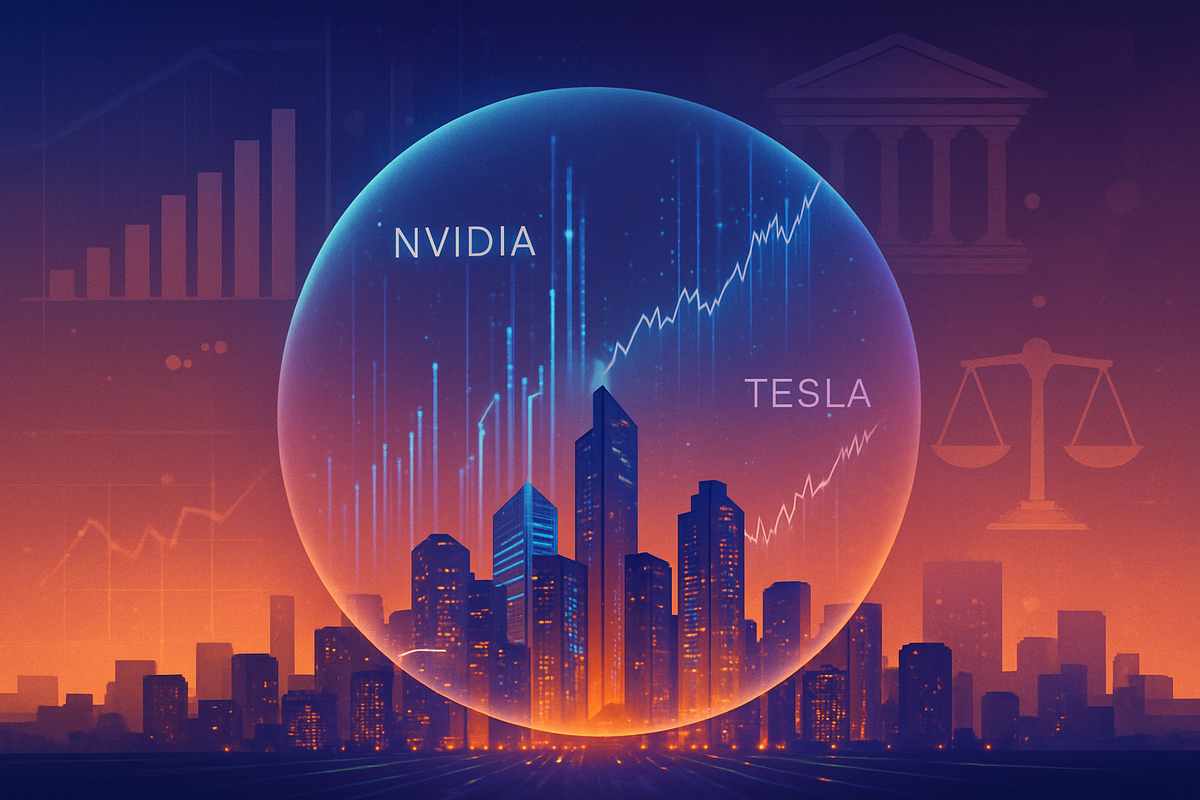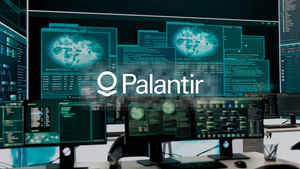Financial News
Market Voices: Goldman Sachs CEO Warns of AI Bubble Amidst Divergent Fed Signals

As of October 3, 2025, the financial markets are navigating a complex landscape shaped by a stark warning from Goldman Sachs (NYSE: GS) CEO David Solomon regarding a potential "AI-driven stock market drawdown" and a chorus of varied perspectives from Federal Reserve officials Stephen Miran and Austan Goolsbee on monetary policy. Solomon's cautionary remarks, drawing parallels to the Dotcom Bubble, introduce a significant element of prudence into the exuberant AI narrative that has largely propelled market gains. Simultaneously, the Federal Reserve's internal debates, highlighted by Miran's aggressive dovishness and Goolsbee's nuanced concerns about inflation and cautious approach to rate cuts, signal potential shifts in monetary policy direction and an increase in market uncertainty.
The immediate implications are multifaceted: while Solomon's warning could temper investor enthusiasm for highly valued AI equities, the market's initial reaction on the day itself appeared resilient, with Dow and S&P 500 futures continuing their upward trajectory, buoyed by the sustained performance of prominent AI-related stocks. However, the divergence within the Fed on the path of interest rates adds another layer of complexity, suggesting that the era of straightforward monetary policy guidance may be yielding to a more unpredictable environment, demanding heightened vigilance from investors.
Goldman Sachs CEO Sounds Alarm on AI, Fed Officials Offer Mixed Signals
The recent pronouncements from key financial figures paint a detailed picture of the current market and economic sentiment. Goldman Sachs CEO David Solomon has demonstrated an evolving stance on the AI phenomenon. In August 2024, he initially dismissed the "AI bubble theory," viewing AI as a "long-term revolution." By January 2025, he underscored AI's tangible productivity gains, citing its ability to rapidly complete complex financial documents. However, a significant shift occurred in September 2025, when Solomon acknowledged "excessive exuberance" in the market, though still affirming AI's justified long-term impact. Most recently, on October 3, 2025, speaking at Italian Tech Week, Solomon delivered a "stark warning," predicting an "AI-driven stock market drawdown" within the next 12 to 24 months, explicitly referencing the Dotcom Bubble and expressing concern that rapid technological acceleration could push "market valuations beyond sustainable fundamentals." Despite this, he also predicted a U.S. economic acceleration into 2026, fueled by stimulus and tech spending, creating a seemingly contradictory outlook of short-term caution amidst long-term optimism.
Concurrently, Federal Reserve Governor Stephen Miran has consistently advocated for a more accommodative monetary policy. On September 22, 2025, Miran argued for a federal funds rate in the "mid-2 percent area," nearly two percentage points below the prevailing policy, and notably dissented from a mid-September Fed decision to cut rates by 25 basis points, instead pushing for a more aggressive 50-basis-point reduction. He reiterated his dovish stance on September 29, 2025, and again on October 3, 2025, emphasizing a "forward-looking" policy and asserting that current policy is "tight" due to a lower neutral rate. His views, often seen as diverging from the Fed's mainstream, highlight a significant internal debate within the central bank.
Adding to the complexity, Chicago Federal Reserve President Austan Goolsbee has offered a more nuanced perspective. In February 2025, he drew parallels between the current AI boom and the late 1990s, where productivity growth didn't trigger significant inflation. However, by October 1, 2025, Goolsbee expressed concern that rising inflation was "going the wrong way" and warned of potential "stagflation" if tariff-induced price hikes persisted. On October 2, 2025, while presenting a "largely optimistic" assessment of the U.S. economy, he maintained his inflation concerns and suggested an "October pause" in anticipated rate cuts due to an ongoing government shutdown affecting economic data. On October 3, 2025, he reiterated the need to "proceed carefully with interest-rate cuts." This blend of optimism for growth and caution on inflation, coupled with the potential impact of political events, creates a highly uncertain environment for future rate decisions.
Initial market reactions on October 3, 2025, appeared to largely defy Solomon's immediate warning, as Dow Futures and S&P 500 futures continued to rise. This resilience was notably driven by the sustained performance of key AI players such as Tesla (NASDAQ: TSLA) and Nvidia (NASDAQ: NVDA), indicating that while a prominent voice on Wall Street has sounded an alarm, the market's conviction in the AI narrative remains strong for now.
Companies Poised to Win or Lose in the AI Landscape and Fed's Shadow
The current financial climate, characterized by both AI exuberance and monetary policy uncertainty, will undoubtedly create distinct winners and losers among public companies. On one hand, companies with highly speculative valuations, particularly those in the nascent stages of AI development without proven profitability or sustainable business models, stand to lose significantly if Solomon's predicted "AI-driven stock market drawdown" materializes. The market's current darlings, such as Nvidia (NASDAQ: NVDA) and Tesla (NASDAQ: TSLA), which have seen substantial gains partly fueled by AI enthusiasm, could face increased scrutiny of their fundamentals and growth projections. Any company heavily reliant on continuous, unchecked investment in AI for future growth, rather than demonstrated returns, would be vulnerable to a shift in investor sentiment or a broader market correction.
Conversely, companies that are genuinely leveraging AI to drive tangible productivity gains, enhance existing products, or create new, profitable services are better positioned to weather a potential downturn or even thrive in a more discerning market. Established technology giants like Microsoft (NASDAQ: MSFT), with its extensive cloud infrastructure and AI integration across its product suite, and Amazon (NASDAQ: AMZN), with its AWS AI services, represent examples of firms that can demonstrate real-world applications and revenue generation from AI. These companies, along with those in enterprise software and cybersecurity that incorporate AI for efficiency and protection, are likely to be seen as more robust investments.
The divergent views within the Federal Reserve also play a crucial role. If Stephen Miran's dovish stance gains more traction, leading to more aggressive interest rate cuts, growth-oriented companies, particularly in technology, could see a tailwind as the cost of capital decreases and future earnings are discounted less heavily. This scenario could temporarily alleviate pressure on some highly valued stocks. However, if Austan Goolsbee's concerns about persistent inflation and caution on rate cuts prevail, leading to a more conservative or even paused approach to easing, it could create headwinds for growth stocks and favor more value-oriented or defensive sectors. Companies with strong balance sheets and consistent cash flows might be preferred in an environment of higher-for-longer rates or increased economic uncertainty.
Ultimately, the market is likely to become more selective. Investors will increasingly differentiate between companies that merely talk about AI and those that can demonstrate clear, measurable returns on their AI investments. This shift could lead to a reallocation of capital, punishing speculative ventures while rewarding those with strong fundamentals and a clear, profitable AI strategy, regardless of the broader market sentiment or the precise path of interest rates.
Broader Significance: Echoes of History and Policy Crossroads
The current confluence of a prominent AI bubble warning and a divided Federal Reserve carries wider significance, potentially marking a pivotal moment for both technological investment trends and monetary policy. Goldman Sachs CEO David Solomon's explicit comparison of the current AI enthusiasm to the Dotcom Bubble of the late 1990s is a powerful historical parallel. This analogy highlights the risk of speculative excess that often accompanies revolutionary technologies, where the promise of future gains can outstrip immediate profitability and fundamental valuations. Such historical precedents suggest that while AI is undoubtedly transformative, the market's current pricing of AI-related assets may be unsustainable in the long run, potentially leading to a significant re-evaluation or correction.
The ripple effects of such a re-evaluation could extend far beyond the technology sector. Venture capital funding for AI startups might tighten, leading to a consolidation in the industry. Established tech companies, if their AI initiatives fail to deliver promised returns, could face investor backlash, impacting their stock performance and broader market indices. Furthermore, a significant market drawdown could impact consumer confidence and spending, potentially affecting the broader economy. Regulatory bodies might also increase their scrutiny of market valuations and potential systemic risks if volatility escalates, leading to new policy discussions around market stability and investor protection.
The internal debate within the Federal Reserve, as evidenced by the differing opinions of Stephen Miran and Austan Goolsbee, underscores a critical crossroads for monetary policy. Miran's persistent call for aggressive rate cuts, driven by a belief in a lower neutral rate and forward-looking inflation trends, represents a more dovish stance, potentially aiming to stimulate economic growth further. Goolsbee's cautious approach, balancing optimism for growth with concerns about "stagflation" and the impact of a government shutdown, reflects a more hawkish inclination, prioritizing inflation control and data-driven decisions. This divergence highlights the challenge central banks face in navigating a complex economic environment with conflicting signals, particularly when considering the long-term impact of tariffs and evolving labor market dynamics.
Historically, periods of significant technological advancement have often been accompanied by market booms and busts. The Dotcom Bubble, for instance, saw immense capital flow into internet companies, many of which eventually failed, but the underlying technology ultimately revolutionized the global economy. The key takeaway from such precedents is that while the technology's long-term impact is profound, the initial market enthusiasm can lead to unsustainable valuations. The Fed's internal policy debates, meanwhile, echo past periods where central banks grappled with balancing growth, inflation, and financial stability, reminding investors that unified policy is not always guaranteed, and internal disagreements can introduce significant uncertainty into market expectations.
What Comes Next: Navigating Uncertainty and Strategic Pivots
Looking ahead, the financial markets are poised for a period of heightened scrutiny and potential volatility, influenced by the interplay between AI sentiment and Federal Reserve policy. In the short term, investors should anticipate continued market speculation around AI companies, coupled with increased focus on their quarterly earnings reports and future guidance. The market will be keenly watching for tangible evidence of profitability and sustainable growth from AI ventures, rather than just aspirational projections. The Federal Reserve's upcoming FOMC meetings and speeches from its officials will be critical for clarity on the future path of interest rates, especially given the divergent views currently expressed. The resolution, or continuation, of the government shutdown and its impact on economic data will also be a key factor influencing the Fed's decisions and market sentiment.
In the long term, the true economic impact of AI technology will become clearer. While some companies may indeed falter as Solomon predicted, the underlying advancements in AI are likely to continue to drive innovation and productivity across various industries. This could lead to the emergence of new market leaders and the transformation of existing business models. The Federal Reserve's challenge will be to achieve a "soft landing" – bringing inflation under control without triggering a recession – a task made more complex by internal disagreements and external economic pressures. The policy decisions made in the coming months will have lasting implications for economic growth, employment, and the overall financial landscape.
From a strategic perspective, companies will need to demonstrate clear return on investment (ROI) from their AI initiatives to maintain investor confidence. This may require strategic pivots, focusing on practical applications of AI that enhance operational efficiency or create measurable revenue streams, rather than solely investing in cutting-edge but unproven technologies. For investors, this environment presents both challenges and opportunities. There may be a shift towards value-oriented or defensive plays if market volatility increases, or opportunities to invest in genuinely innovative AI companies with strong fundamentals that emerge stronger from any potential market correction.
Potential scenarios range from a gradual cooling of AI enthusiasm, leading to a more rational valuation of companies, to a sharper market correction if Solomon's "AI-driven drawdown" materializes. On the monetary policy front, the Fed could either lean towards Miran's dovish stance, providing more liquidity to the market, or adopt Goolsbee's cautious approach, potentially leading to higher-for-longer rates. Each scenario carries distinct implications for different asset classes and investment strategies, underscoring the need for adaptability and thorough due diligence in the coming months.
Wrap-Up: Navigating the AI Frontier and Fed's Shifting Sands
The recent warnings from Goldman Sachs CEO David Solomon regarding a potential "AI-driven stock market drawdown" and the discernible divergence in monetary policy views among Federal Reserve officials Stephen Miran and Austan Goolsbee collectively mark a significant inflection point for financial markets. Solomon's cautionary tale, echoing the Dotcom Bubble, serves as a crucial signal for investors to reassess the sustainability of current AI valuations, urging a shift from speculative exuberance to a focus on fundamental strength and tangible returns. Simultaneously, the internal debates within the Fed underscore a period of heightened uncertainty regarding the trajectory of interest rates, complicating investment decisions and potentially introducing greater market volatility.
Moving forward, the market is poised for a period of re-evaluation, where the genuine impact of AI on productivity and profitability will be scrutinized more intensely. Investors should anticipate a more discerning environment, where companies demonstrating clear, measurable benefits from their AI investments will be favored over those with speculative narratives. The Federal Reserve's policy path will remain a central determinant of market sentiment, with the ongoing debate between aggressive easing and cautious inflation management continuing to shape expectations for economic growth and asset prices.
The lasting impact of these pronouncements could be profound, potentially signaling a maturation of the AI investment cycle and a more nuanced approach to central bank communication. While AI's transformative potential remains undeniable, the market's journey through this technological revolution is likely to be less linear and more volatile than many have assumed. The current landscape serves as a potent reminder that even in periods of groundbreaking innovation, market fundamentals and prudent monetary policy remain paramount.
Investors should closely monitor several key indicators in the coming months: the earnings reports and forward guidance from leading AI companies for concrete evidence of profitability; upcoming FOMC meetings and speeches from Federal Reserve officials for clearer signals on interest rate policy; and broader inflation data and economic indicators, including the resolution of the government shutdown, to gauge the health of the overall economy. A proactive and informed approach will be essential to navigate the evolving dynamics of the AI frontier and the Fed's shifting sands.
This content is intended for informational purposes only and is not financial advice
More News
View More




Recent Quotes
View More
Quotes delayed at least 20 minutes.
By accessing this page, you agree to the Privacy Policy and Terms Of Service.



